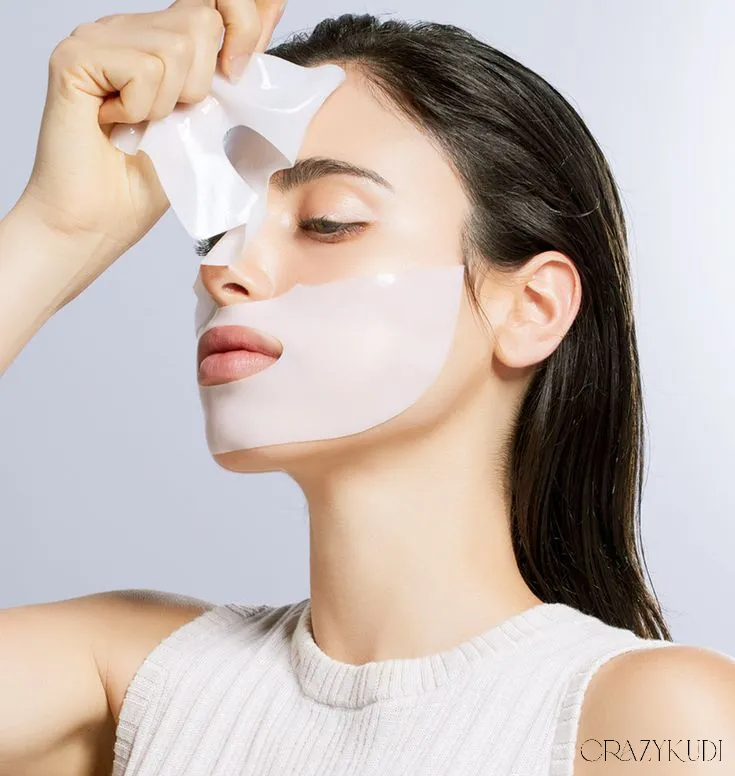As a dermatologist, one of the most common skincare questions I get is: “Are sheet masks really worth it?” The answer is a resounding yes—if you’re using the right mask in the right way. Sheet masks are more than a spa-day indulgence; they’re a clinically beneficial step in your skincare routine when used thoughtfully.
This guide will walk you through everything you need to know about sheet masks—from selecting the right type for your skin to applying it correctly and getting the most out of every session.
What Is a Sheet Mask?
Sheet masks are thin sheets—usually made of cotton, hydrogel, or bio-cellulose—soaked in a concentrated serum filled with active ingredients. They act as an occlusive barrier that prevents quick evaporation and forces your skin to absorb nutrients more effectively.
Their purpose? To deliver a quick, intense dose of hydration, antioxidants, and other skin-enhancing ingredients in just 15–20 minutes.
Types of Sheet Masks by Material
- Cotton or Microfiber Masks
- Most common and affordable.
- Comfortable, breathable, but may not hold serum as efficiently.
- Hydrogel Masks
- Gel-like texture, adheres closely to the skin.
- Excellent for retaining moisture and delivering serum deeply.
- Bio-Cellulose Masks
- Derived from natural fibers, often used in medical dressings.
- Offers the best adherence and serum absorption.
Also read: 5 Common Sheet Mask Mistakes You're Probably Making (And How to Fix Them)
How to Choose the Right Sheet Mask for Your Skin Type
- Dry Skin
- Look for masks with hyaluronic acid, ceramides, aloe vera, or squalane.
- Hydrating and moisturizing formulas are key.
- Oily or Acne-Prone Skin
- Choose ingredients like tea tree oil, salicylic acid, niacinamide, or green tea.
- Avoid heavy or oil-based serums.
- Sensitive Skin
- Use calming ingredients like centella asiatica (cica), chamomile, or calendula.
- Skip fragrances and alcohol.
- Dull or Uneven Skin Tone
- Vitamin C, pearl extract, and licorice root help brighten and improve radiance.

How to Use a Sheet Mask (Step-by-Step)
- Cleanse Thoroughly
- Start with a gentle cleanser to remove dirt, oil, and makeup.
- Tone (Optional)
- Use a toner to balance the pH and prepare the skin for absorption.
- Apply the Mask
- Unfold carefully and press it evenly across your face, starting from the forehead and smoothing outward.
- Leave On for 15–20 Minutes
- Do not exceed the recommended time, or the mask will begin to dry and pull moisture back out.
- Remove and Massage In Serum
- Gently pat the remaining essence into your skin. No rinsing!
- Seal It In
- Follow with moisturizer or a lightweight facial oil to lock in the benefits.
Sheet Mask Mistakes to Avoid
- Wearing the mask too long – causes reverse dehydration.
- Skipping post-mask moisturizer – leaves skin vulnerable.
- Not cleaning skin beforehand – blocks serum absorption.
- Throwing away leftover serum – use it on your neck and hands!
Also read: Top 3 Benefits of Sheet Masks Everyone Should Know
How Often Should You Use a Sheet Mask?
For most skin types, 2–3 times per week is ideal. If your skin is extremely dry or recovering from irritation, hydrating masks can be used more frequently. Always observe how your skin reacts and adjust accordingly.
Final Thoughts from a Dermatologist
Sheet masks are a versatile and effective way to supercharge your skincare routine. Whether you’re looking to hydrate, calm, brighten, or purify your skin, there’s a sheet mask out there for you. The key lies in choosing the right type, applying it properly, and using it consistently.
Consider them a short-term treatment with long-term benefits—especially when paired with a good skincare routine.
Your skin deserves that 20-minute glow-up. And now, you know exactly how to make it count.

